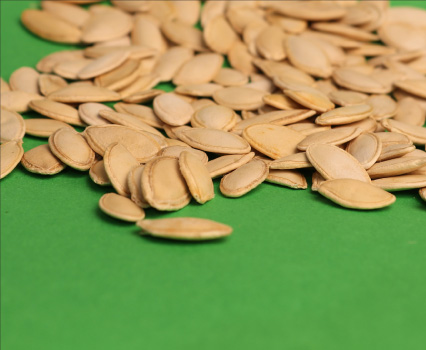Why the U.S. Oat Beta Glucan Market Is Ushering in a Natural Wellness Revolution?

The US Oat Beta Glucan Market is rapidly gaining traction as a key player in the functional foods and nutraceuticals landscape, valued at USD 170 million in 2024 and projected to soar to USD 290 million by 2030. With an impressive compound annual growth rate (CAGR) of 9.2% from 2025 to 2030, this market highlights the growing demand for natural, evidence-based health ingredients among the American consumer base.
A Health Revolution Driven by Natural Ingredients
Oat beta-glucan, a soluble fiber extracted from oats, is recognized for its proven health benefits, including lowering cholesterol, supporting cardiovascular health, regulating blood glucose levels, and enhancing the immune system. These attributes have earned it notable regulatory recognition, including approval by the FDA to carry heart health claims. As awareness of preventive healthcare grows, American consumers are increasingly turning to food and supplement products incorporating oat beta-glucan, contributing significantly to its market growth.
This soluble dietary fiber fits perfectly into the ongoing clean-label trend. Consumers today are more cautious and conscious of ingredient lists, favoring products that are plant-based, minimally processed, and free from artificial additives. Oat beta-glucan aligns with these preferences, offering manufacturers a versatile and wholesome ingredient to innovate within food, beverages, dietary supplements, and pharmaceuticals.
Market Drivers and Opportunities
The US market benefits from a robust agricultural base capable of producing high-quality oats, along with advanced extraction and food processing technologies that help maintain the functional integrity of beta-glucan. Key industries, such as food and beverages, nutraceuticals, and pharmaceuticals, have adopted this ingredient, incorporating it into breakfast cereals, baked goods, dairy alternatives, drinks, and immune-support supplements.
Moreover, the rise in lifestyle diseases like obesity, diabetes, and cardiovascular conditions has expedited consumer interest in preventive nutrition. World Health Organization data shows how obesity has increased since the 1990s, and now 1 out of 8 people is obese. And the International Diabetes Federation states that by the year 2050, 1 out of 8 people, approximately 853 million people, will be living with diabetes. The clinically validated benefits of oat beta-glucans make it an attractive solution for health-conscious consumers seeking to manage cholesterol and improve gut health naturally.
Food companies are leveraging oat beta-glucan not only for its health properties but also due to its ability to enhance product texture and shelf life, creating a win-win scenario for both manufacturers and consumers. The versatility of oat beta-glucan in various formats, including powders, liquids, and granules, further expands its application possibilities.
Challenges Facing the Market
Despite the bright outlook, the US oat beta-glucan market faces notable challenges. The complex and costly extraction and standardization processes remain barriers to affordability and mass adoption. Producing pure and consistent beta-glucan requires specialized milling, enzymatic treatment, and separation technologies that drive up manufacturing costs.
Consequently, products containing oat beta-glucan often carry a premium price tag compared to alternatives such as psyllium husk or synthetic fibers, which limits their accessibility to a broader consumer population. Until cost-effective production technologies emerge, this will continue to be a key restraint on market expansion.
Market Segmentation and Competitive Landscape
Soluble beta-glucan dominates the US market segment, accounting for a 57.3% share in 2024, backed by strong consumer preference and scientific validation of its health benefits. It is recognized for its superior efficacy in lowering cholesterol and stabilizing blood sugar over insoluble beta-glucan, which, while beneficial for digestive health, does not enjoy the same versatility or regulatory support.
Several major players are actively competing to innovate and consolidate their market position, including Cargill, Tate & Lyle, DSM Nutritional Products, Kerry Group, and Lantmännen Biorefineries. These companies are focusing on improving extraction technologies, expanding product portfolios, and collaborating with food manufacturers to meet the rising market demand.
Looking Ahead: Trends to Watch
Innovation in oat beta-glucan extraction technologies promises to reduce costs and enhance product quality, potentially broadening its adoption significantly. The growing focus on immune health following recent global health concerns is bolstering demand for beta-glucan-based nutraceuticals.
Additionally, consumer demand for plant-based, sustainable, and clean-label products will remain a significant growth driver. As the oat beta-glucan market continues to expand, it is likely to diversify across the personal care, cosmetics, and animal nutrition sectors.
Conclusion
The US oat beta-glucan market is on a strong growth trajectory fueled by rising health awareness, regulatory support, and the commercialization of innovative applications. With the market expected to reach USD 290 million by 2030 at a robust CAGR of 9.2%, this natural, functional fiber represents a compelling opportunity for manufacturers and health-conscious consumers alike. Addressing current production cost challenges will be critical to unlocking the full market potential and making oat beta-glucan products more accessible to a broader audience.
In an era where preventive health and natural ingredients dominate consumer priorities, oat beta-glucan stands out as a shining example of nature’s power meeting scientific validation, shaping the future of functional foods and nutraceuticals in the United States.